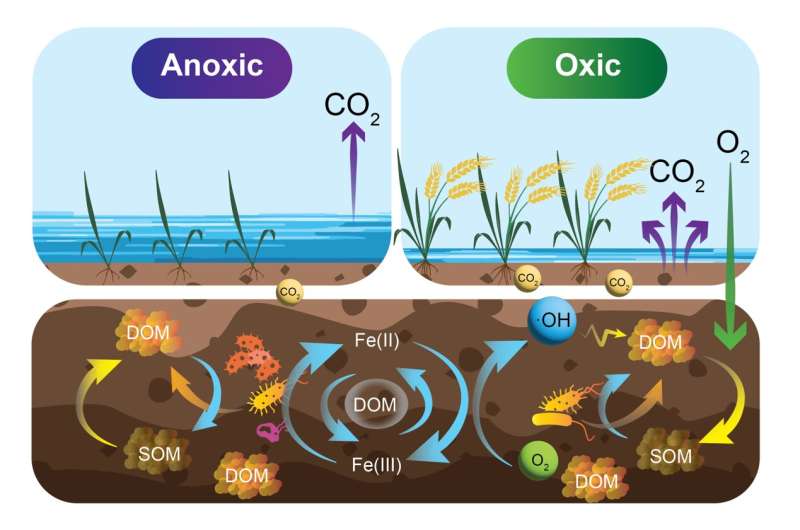This article has been reviewed according to Science X's editorial process and policies. Editors have highlighted the following attributes while ensuring the content's credibility:
fact-checked
proofread
Unraveling paddy soil secrets: Surprising contribution of nonmicrobial mechanisms to CO₂ emissions

A study published recently in the journal Eco-Environment & Health, has shown that natural processes, especially reactions involving certain reactive oxygen species, play a big role in how paddy soils release CO2. This adds to our understanding of the world's carbon balance.
Researchers embarked on a journey to decode several aspects of CO2 emissions. They investigated how CO2 releases and •OH production differ across various paddy soils. They also discerned the role of non-living processes in these emissions. A crucial part of their study was also dedicated to observing how the variety and nature of dissolved organic materials in the soil change upon short-term exposure to oxygen.
When oxygen was added to the soil, both CO2 releases and •OH production increased, especially in the top layers, showing how impactful oxygen is on the soil. The study found that living organisms play a major role in CO2 emissions, but during short periods when soil gets more oxygen, reactions from non-living things cause a quick rise in CO2.
Additionally, the CO2 released is closely linked to the organic content in the soil's water, underscoring the interplay between the soil's solid and liquid components. Furthermore, after exposing the soil to oxygen, the makeup of these organic materials changed significantly, highlighting the importance of non-living processes in this transformation.
Although living microbes play a pivotal role in CO2 emissions from paddy soils, non-living processes, particularly those involving •OH, hold equal significance. Recognizing the intricate interplay between organic carbon and both living and non-living contributors will empower researchers to devise more effective strategies against climate change.
More information: Jinsong Liu et al, Nonmicrobial mechanisms dominate the release of CO2 and the decomposition of organic matter during the short-term redox process in paddy soil slurry, Eco-Environment & Health (2023). DOI: 10.1016/j.eehl.2023.08.005
Provided by TranSpread


















